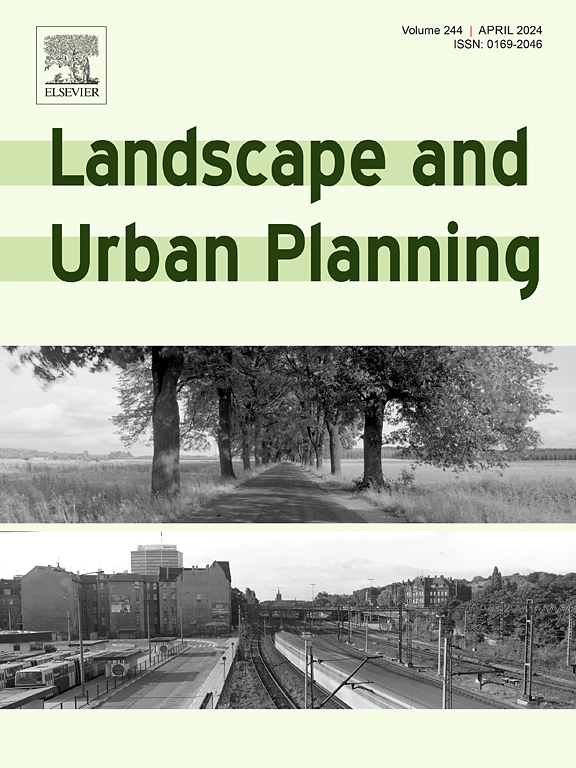Research note: assessing human preferences for natural landscapes—an analysis of ChatGPT-4 and LLaVA models
IF 9.2
1区 环境科学与生态学
Q1 ECOLOGY
引用次数: 0
Abstract
This study explores the potential of large language models (LLMs) to approximate human preferences for and aesthetic judgments of natural landscapes using natural language processing techniques. Our research addresses the gap in understanding how well LLMs can replicate complex human perceptions related to landscape preferences. We compared human responses and model predictions across 30 natural scenes in five landscape preference dimensions—complexity, coherence, legibility, mystery, and overall preference. Responses from 50 human participants formed the benchmark for assessing predictions by Chat Generative Pre-Trained Transformer (GPT)-4 and Large Language and Vision Assistant (LLaVA). Correlations between human responses and model predictions evaluated the extent of AI’s ability to mimic complex human perceptions. The results indicate that GPT-4 and LLaVA align significantly with human judgments of complexity, coherence, mystery, and overall preference but not of legibility, which highlights the challenge of evaluating nuanced aspects of natural landscapes using LLMs.
研究笔记:评估人类对自然景观的偏好——对ChatGPT-4和LLaVA模型的分析
本研究探讨了大型语言模型(LLMs)利用自然语言处理技术近似人类对自然景观的偏好和审美判断的潜力。我们的研究填补了在了解大型语言模型如何复制人类与景观偏好相关的复杂感知方面的空白。我们从五个景观偏好维度--复杂性、连贯性、可读性、神秘性和总体偏好--比较了 30 个自然景观中人类的反应和模型的预测。来自 50 名人类参与者的反应是评估 Chat Generative Pre-Trained Transformer (GPT)-4 和 Large Language and Vision Assistant (LLaVA) 预测结果的基准。人类反应与模型预测之间的相关性评估了人工智能模仿复杂人类感知的能力。结果表明,GPT-4 和 LLaVA 与人类对复杂性、连贯性、神秘性和整体偏好的判断显著一致,但与可读性的判断不一致,这凸显了使用 LLM 评估自然景观细微差别的挑战。
本文章由计算机程序翻译,如有差异,请以英文原文为准。
求助全文
约1分钟内获得全文
求助全文
来源期刊

Landscape and Urban Planning
环境科学-生态学
CiteScore
15.20
自引率
6.60%
发文量
232
审稿时长
6 months
期刊介绍:
Landscape and Urban Planning is an international journal that aims to enhance our understanding of landscapes and promote sustainable solutions for landscape change. The journal focuses on landscapes as complex social-ecological systems that encompass various spatial and temporal dimensions. These landscapes possess aesthetic, natural, and cultural qualities that are valued by individuals in different ways, leading to actions that alter the landscape. With increasing urbanization and the need for ecological and cultural sensitivity at various scales, a multidisciplinary approach is necessary to comprehend and align social and ecological values for landscape sustainability. The journal believes that combining landscape science with planning and design can yield positive outcomes for both people and nature.
 求助内容:
求助内容: 应助结果提醒方式:
应助结果提醒方式:


